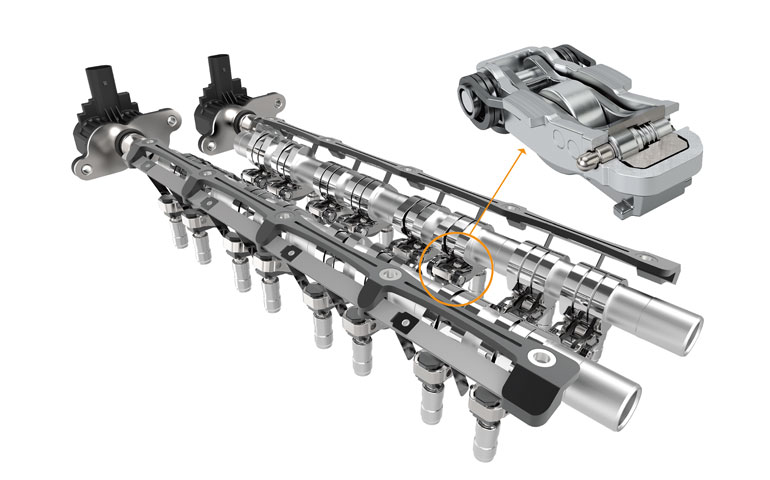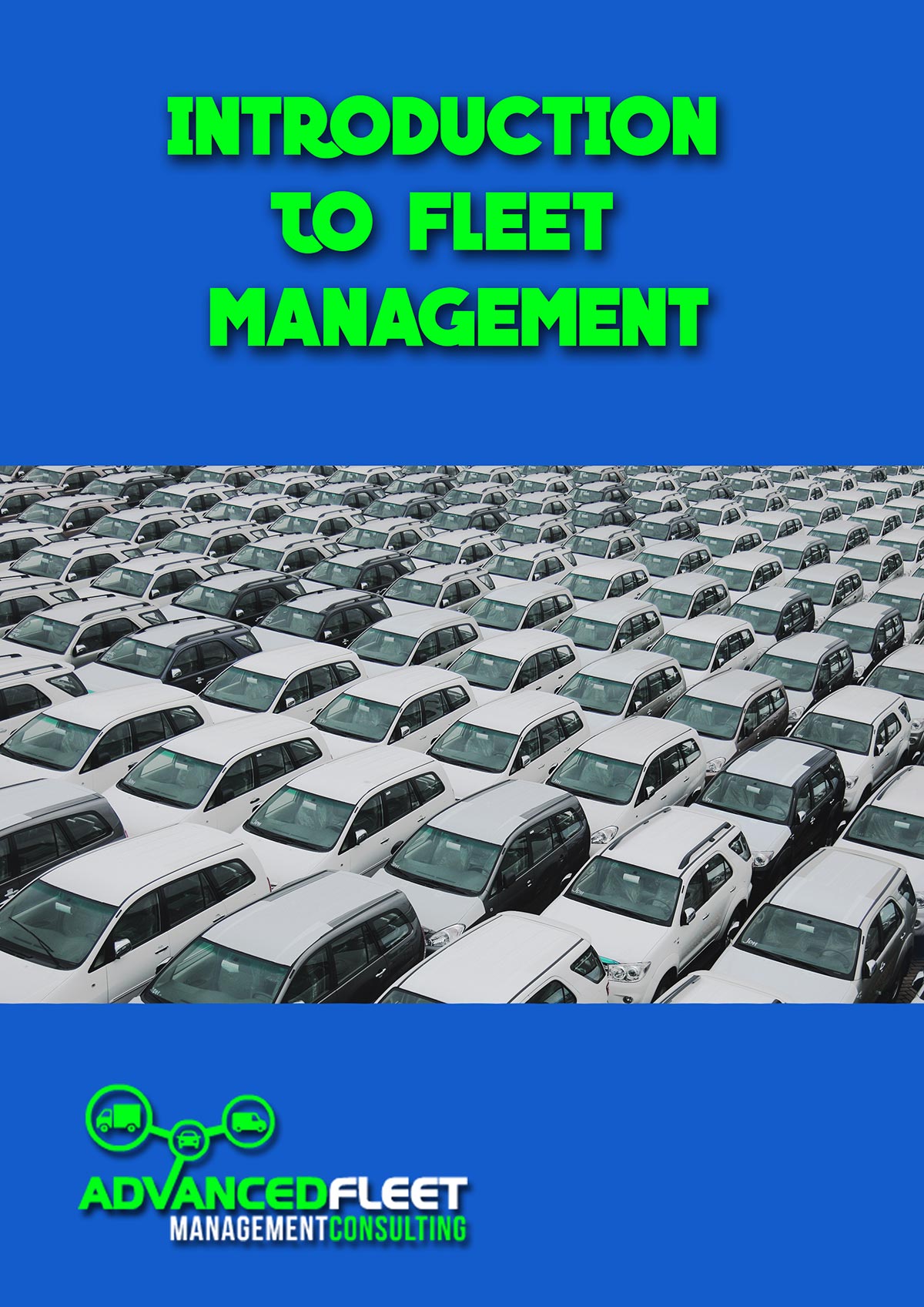Active exhaust temperature management is a key technology of modern diesel engines to fulfil upcoming RDE emission legislation requirements. IAV and Schaeffler present a fuel efficient concept using a switchable valve train system.
INTRODUCTION & MOTIVATION
Stricter NOx emission targets in RDE legislation and the reduction in CO2 fleet target values by 2025 require new technologies for gasoline and diesel engines. With diesel engines, exhaust gas aftertreatment plays a key part in meeting the NOx target values. In this context, the central challenges lie in heating up the catalysts after starting the engine at optimum CO2 emission and in preventing exhaust system cool down in low load driving profiles [1].
Various heating modes are state-of-the-art, which cause fuel consumption to increase. Internal EGR (iEGR) by means of Secondary Exhaust Valve Lift (SEVL) is known as a measure for increasing exhaust gas temperature, while keeping the increase in fuel consumption relatively low [2, 3]. Various exploratory studies, however, show that using iEGR alone is not sufficient to achieve an exhaust gas temperature of T4 > 200 °C when operating at very low load. At very low load, this always demands further measures, such as Intake Air Throttling (IAT) or late combustion, which is accompanied by significantly higher fuel consumption. IAT in particular provides an effective means for increasing exhaust gas temperature in the low-load range, as it is aimed at reducing excess cylinder charge as the cause of low exhaust gas temperature. The critical part about IAT is the poorer gas exchange and the resultant increase in fuel consumption.
0-D/1-D SIMULATION OF CONVENTIONAL & INNOVATIVE HEATING STRATEGIES
The key idea of this paper is to combine intake-side valve train variability for throttle-free reduction of cylinder charge with iEGR. The aim here is to achieve a sufficient exhaust gas temperature even at low engine load for active DeNOx, while minimising fuel consumption at the same time.
iEGR is realised by an SEVL, (1) (left). Throttle-free charge reduction is achieved by early intake valve closure (eIVC), (1) (right). Looking at the effects of these two strategies, it is obvious that eIVC is an anti-pole to SEVL, which tends to increase the cylinder temperature excessively, (1). This opposite nature bears potential to create combustion conditions that are as ideal as possible for the diesel process. This is especially relevant under changing ambient temperatures and engine temperature states. This way a well-balanced ratio of pre-mixed and diffusive combustion can be provided at all times. HC/CO and soot emissions can be balanced accordingly.

As basis for the simulation study in GT Suite, a generic engine model of a 2 l in-line four-cylinder engine is selected comprising single-stage VNT turbocharging and an HP/LP EGR system. (2) shows the simulation results for the engine idling point. It presents various calibration strategies for increasing exhaust gas temperature T4. From the reference calibration without heating measures, it can be seen that T4 is only approximately 110 °C at this operating point.

As a conventional heating measure, a combination of IAT and uncooled HP-EGR is shown (dark blue). The variation with eIVC provides an alternative way of controlling cylinder charge (pale blue). Compared to the conventional heating strategy with IAT, eIVC leads to lower T4 at comparable cylinder gas masses mIVC due to improved fuel consumption. At the end of the eIVC variation, the Indicated Specific Fuel Consumption (ISFC) is approximately 15 % lower than for the IAT strategy.
In case of the SEVL strategy (orange), the iEGR rate was varied by using the throttle valve while keeping SEVL height constant. In comparison to the conventional IAT strategy, the last simulated point shows an 8 % reduction in fuel consumption. This results from the improved gas exchange, as IAT is only used for increasing iEGR and intake manifold pressure p2 does not fall significantly. The higher cylinder gas temperature is the main mechanism of iEGR. This can also be seen from the results for final compression temperature TTDC,ovr.
A comparison of the results of eIVC and SEVL shows the opposite nature of the two strategies in TTDC,ovr. In this opposition, significant potential is seen for producing ignition conditions in the combustion chamber within the ideal range. This involves combining both strategies with each other (green). In this context, the timing of intake valve closure was selected as the variation parameter for defining cylinder charge. Closing the intake valve earlier increases the iEGR rate, resulting in a higher TTDC,ovr. This is expected to improve the low level of combustion stability when using eIVC, making it possible to apply this strategy in the low-load range at all. The benefit of this combined strategy ultimately lies in achieving a sharp rise in exhaust gas temperature while optimising fuel consumption. At the last point of the simulation, fuel consumption is reduced by 17 % in comparison to IAT.
VALIDATION ON THE SINGLE-CYLINDER ENGINE
The 1D simulation study reveals promising results for a consumption-optimised heating strategy. The most important strategies were measured on a single-cylinder research engine with fully variable valve train [2]. The boundary conditions in the air path were transferred as accurately as possible from full-sized engine simulation.
(3) shows the IAT strategy (dark blue) as reference. In addition to this, there are two options for combining SEVL and eIVC:
:: longer SEVL opening duration (much iEGR) and moderate eIVC timing (moderate reduction of charge and effective compression ratio): red;
:: shorter SEVL opening duration (little iEGR) with pronounced eIVC timing (greatly reduced charge and very low effective compression ratio): green.

For a fair comparison of fuel consumption results, an additional point was measured for the IAT strategy. Using external EGR, NOx emissions were set to the level of the SEVL + eIVC strategies. Ultimately, the significant fuel consumption benefit of SEVL + eIVC predicted by simulation can be confirmed through measurement. For an exhaust gas temperature rise of ΔT3 = 80 °C, both SEVL + eIVC strategies show a reduction of approximately 16.8 % in indicated fuel consumption.
The consequences of the changed ignition conditions become apparent by looking at the combustion profiles. The reference strategy IAT (dark blue) shows clearly premixed combustion, resulting from the reduced final compression pressure caused by throttling. By comparison, variant 1 (red) burns very diffusively with a short ignition delay as a result of the high iEGR rate. Variant 2 (green), in turn, was operated with reduced iEGR but greater use of eIVC and, accordingly, shows a strong response towards premixed combustion again. This means that combining iEGR and throttle-free charge reduction makes it possible to set the ignition delay, the premixing tendency and the emission of HC/CO and soot in a balanced way.
CONSUMPTION POTENTIAL IN THE WLTC DRIVING CYCLE
Driving cycle simulation was carried out in combination with a D segment vehicle and automatic transmission. A detailed model of exhaust gas aftertreatment is used, which models the chemical reactions at the diesel oxidation catalyst, diesel particulate filter as well as the SCR catalyst. The driving cycle selected was the first phase of the WLTC (WLTC low), as it is representative of critical driving cycles requesting low load.
(4) shows the results without heating measures as reference case (grey curve). Exhaust gas temperature T4 only reaches values over 200 °C for short periods and is altogether at a low level. As a result, NOx conversion at the SCR catalyst is virtually non-existent. The results of the conventional IAT heating strategy with periodically activated post-injection (dark blue curve) are also shown.

Through the high iEGR rates, which can also be quickly delivered on account of lacking air path inertia, the SEVL + variable eIVC strategy (green curve) produces lower engine-out NOx emissions, which are then further reduced as a result of the SCR catalyst’s rapid response. At times, the SEVL + variable eIVC strategy also demands post-injection to reach the required exhaust gas temperature level (steady-state target value being 250 °C). Looking at the switching states of SEVL and eIVC, it must be noted that the earliest possible eIVC timing occurs very often. This suggests that discrete cam profile switching can also produce the desired results, thereby representing a more attractive alternative in respect of system costs. For this reason two additional configurations were examined for eIVC with discrete valve lift profiles.
The results provide a basis for comparing the CO2 emissions from all strategies at constant NOx emission. (5) summarises the calibration variants selected and shows the differences in comparison to the IAT reference heating strategy.
:: Applying SEVL reduces CO2 emission by 2.5 %;
:: Combining SEVL and eIVC can reduce the use of the throttle valve, producing benefits in fuel consumption. The variants with constant eIVC lift curve reduce CO2 emission by 4.5 % (moderate eIVC) or 5.3 % (pronounced eIVC);
:: Variable eIVC obviates the need to use throttle valve actuation. This increases the CO2 saving to 5.7 % over the IAT reference heating strategy.

HARDWARE CONCEPT FOR IMPLEMENTING THE VARIABILITY
One potential hardware concept for implementing the variability in the valve train (with the exception of fully variable eIVC) is the electromechanical eRocker System developed by Schaeffler, (6). An actuator operates the Switchable Roller Finger Followers (SRFF) via an actuation bar, comprising slider bar and leaf springs. The leaf springs transfer the movement of the slider bar while also acting as an energy buffer if, during actuation bar movement, the actuating pin of a SRFF is not force-free and therefore cannot be directly actuated (when the cam is outside the base-circle phase, for example). In an unactuated state, there is no contact between leaf spring and actuating pin, preventing any additional friction contribution. In addition, the positioning of the actuating pin close to the pivot guarantees a low level of friction in the actuated state.
A different configuration of the leaf springs (length/ cross section) gives the system a further advantage, which permits flexible positioning in the cylinder head and individual adjustment to package conditions. The set-up of the eRocker System furthermore makes it easy to implement multiple-stage switching strategies. Both on the intake as well as on the exhaust side, this can be realised by using two parallel-running slider bars in conjunction with different lift profiles or double lifts on the intake or exhaust valves [3]. (6) shows a valve selective switching concept on the exhaust side.

SUMMARY
This paper describes an approach developed for increasing the exhaust gas temperature of diesel engines in the low-load range while optimising fuel consumption. This is aimed at meeting the NOx exhaust gas limits of the RDE legislation stages for Euro 6d and beyond. The proposed solution is based on the finding that during low-load operation, the high surplus of cylinder charge mass is the main reason for the low exhaust gas temperature. It is proposed to reduce the charge by means of variable intake valve timing.
At low load and with a cold engine, this strategy cannot be applied on its own as it leads to an even longer ignition delay than intake air throttling does. This produces higher raw HC and CO emission levels as well as unacceptable combustion stability. The solution to this problem lies in combining variable intake valve timing with iEGR. This compensates the respective temperature effects in the cylinder with the resultant positive influence on pollutant emission. All of this while increasing the exhaust gas temperature significantly at optimum CO2. In the urban part of the WLTC, this strategy reduces fuel consumption by up to 5.7 % in comparison to conventional heating strategies.
Production-ready components are available from Schaeffler Technologies AG & Co KG for implementing valve train variability. As a hardware concept with optimum cost-benefit ratio, it is proposed to combine two parallel-connected SRFF on the intake side for eIVC with a SRFF on the exhaust side for SEVL.
REFERENCES
[1] Kufferath, A.; Krüger, M.; Naber, D.; Mailänder, E.; Maier, R.: Der Diesel Powertrain auf dem Weg zu einem vernachlässigbaren Beitrag bei den NO2-Immissionen in den Städten. 39th Vienna Engine Symposium, Vienna (Austria), 2018
[2] Brauer, M.; Diezemann, M.; Pohlke, R.; Rohr, J.; Severin, C.; Werler, A.: Variable Valve Train – Measure for Active Exhaust Temperature Management in Diesel Engines. 5th MTZ Conference on Gas Exchange in the Internal Combustion Engine, Stuttgart (Germany) 2012
[3] Himsel, F.; Christgen, W.; Werblinski, T.; Brauer, M.; Pohlke, R.: Switchable Valve Train Components for Passenger Car Diesel Engines as Contribution to RDE Legislation Compliance. SIA Powertrain Conference, Rouen (France) 2018
AUTHORS
DIPL.-ING. RENÉ POHLKE is Development Engineer in Diesel Engine Concept Development at IAV GmbH in Berlin (Germany).
DR-ING. MAXIMILIAN BRAUER is Head of the Diesel Engine Concept Development Department at IAV GmbH in Berlin (Germany).
DR FRANK HIMSEL is Head of Application Engineering for Variable Valve Train Systems/Switching Components at Schaeffler Technologies AG & Co. KG in Herzogenaurach (Germany).
DIPL.-ING. (FH) WOLFGANG CHRISTGEN is Head of the Product Group Variable Valve Train Systems/Switching Components at Schaeffler Technologies AG & Co. KG in Herzogenaurach (Germany).
By Dipl.-Ing. René Pohlke
Source: https://autotechreview.com
CUT COTS OF THE FLEET WITH OUR AUDIT PROGRAM
The audit is a key tool to know the overall status and provide the analysis, the assessment, the advice, the suggestions and the actions to take in order to cut costs and increase the efficiency and efficacy of the fleet. We propose the following fleet management audit.




